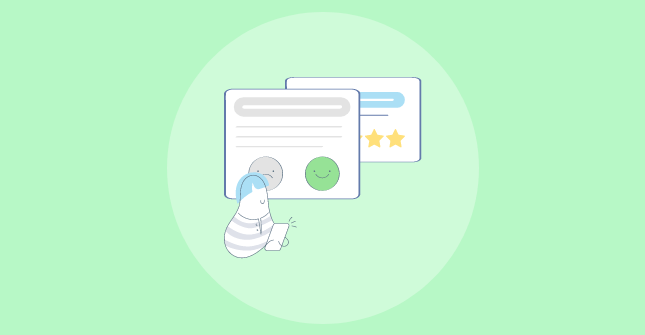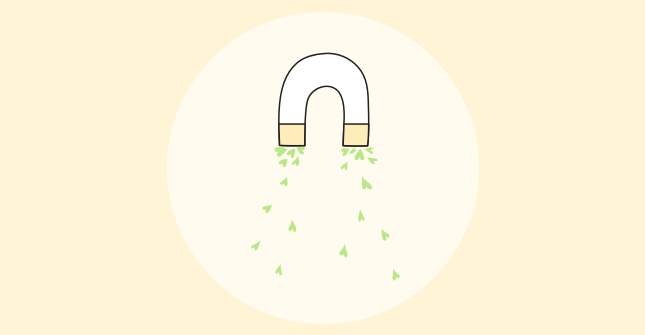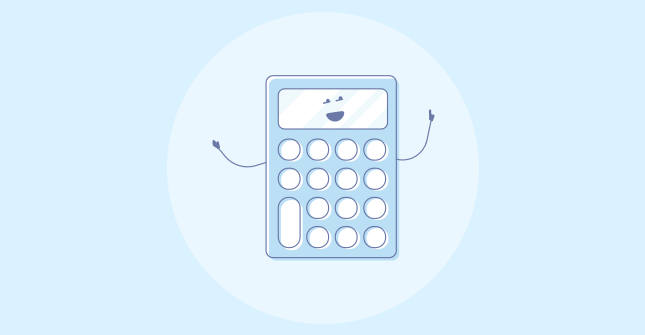To improve customer satisfaction, you need to go beyond making customers happy – We all know that. The question is how much further.
What makes a customer satisfied with the business? Are there points of delight you can target, or is it limited to a few critical moments?
Let’s find out.
As rightly put by Jeannie Walters – “There are no small moments, in some ways, because every single one of these moments is amplified right now. It’s all about setting expectations and then delivering on those smaller promises throughout the journey.”
Every interaction with your business presents an opportunity to create a happy customer. The challenge is to locate and target such touchpoints.
That’s why we have this blog for you. We will go through actionable tips to improve customer satisfaction along the customer journey. We have also added takeaways on how and where to implement them.
20 Best Customer Satisfaction Tips for 2024
Benchmark Satisfaction Metrics
Benchmarking helps to set a solid baseline to give you a clearer picture of what and where it needs to be done to improve customer satisfaction and CSAT numbers.
Start by collecting the CSAT, NPS, and other customer experience scores at different interaction points to visualize which touchpoints are lacking.
Let’s take a simple example.
Suppose you start by collecting the CSAT scores at three customer touchpoints, i.e., in-store, website checkout, and support tickets.
You observe that in-store customers score their experience above 80. On the other hand, website and ticket CSAT scores stand at 77 and 58, respectively.
Something odd here, isn’t it?
The difference between the highest and lowest score is 22.
Once you have established this fact, You can explore strategies to increase customer satisfaction on that front, such as by using follow-up surveys to explore the reasons behind the poor experience ratings.
In the same way, collect other experience metrics like NPS and CES for benchmarking. You can also compare your scores with the industry standards to define achievable targets for the next quarter or year.
Collect Customer Feedback Data
The journey to improving customer satisfaction starts with understanding your audience and the best way to do it is by gathering data.
But what kind of data are we talking about?
Data about their issues, problems, preferences, purchase history, and more. Each data set can provide unique insights on ways to increase customer satisfaction.
As to how you can collect relevant data, you can leverage different tools and techniques, such as:
Surveys
Collect feedback by designing targeted surveys and placing them at strategic interaction points like checkout, product page, homepage, high-traffic landing pages, blogs, etc.
Use advanced survey tools like Qualaroo to target website visitors based on their actions and behavior, like exit intent and position on the page, to show the surveys at the right time.
Feedback Forms & Sidebar
Unlike surveys that spring into action based on the set triggers, feedback forms are a part of your website UI. They are usually embedded as a button or tab on the page.
This makes it easier to collect unsolicited feedback and may give insights into problems you may not have thought about.
The customers can click on the feedback sidebar and submit their feedback anytime.
Behavioral Tools
Heatmaps, session replays, and click stream data let you visualize the customer experience as they navigate your website, mobile app, and product. These tools capture customers’ actions like clicks, content scanning patterns, most interacted page sections, etc.
So, you can use the data as the secondary source to pinpoint which elements need to be optimized to improve customer satisfaction and experience.
Support Tickets
If someone is going through the pain of writing out their issues, the ticket needs to be the highest priority for your success teams.
There can be no clearer indication that the customer is frustrated or unsatisfied with something in your product offering.
And once you help this poor soul, you can cross-check to see if the same problems are also affecting others to get a handle on things.
Collecting customer feedback data is crucial to understanding their pain points and weeding them out to enhance customer satisfaction.
Map Customer Journeys for Different Segments
You have different types of customers among your audience base. And each customer segment has its preferences, problems, needs, and challenges.
If you track the actions and interactions of a customer segment at different stages, i.e., from brand discovery to product purchase and beyond, you get a customer journey map.
Building customer journey maps for each segment can help you compare what does and doesn’t work for them.
It helps you visualize critical touchpoints, difficulties customers face, and their expectations and motivations. Then, you can develop cumulative strategies for ensuring customer satisfaction.
For example, you can isolate high-value customers from low-spending ones to focus on them separately. High-spending customers bring more revenue, so you can prioritize these experiences to deliver customer satisfaction.
| Related Read: Build Your Customer Journey Map From Scratch |
Act on the Feedback Data
There’s no point in collecting the feedback if it sits there collecting dust. Start working on it to improve customer satisfaction.
Here’s how:
- Open up the spreadsheet and add each feedback data into rows.
- Make a separate column to add categories to each feedback like issue, bug, general, etc.
- Add another column and mark the sub-category for each row like payment bug, page load issue, positive review, etc.
| Category | Sub-category |
| Bug report | CriticalNon-critical |
| General positive/negative | |
| Feature update | Add featureRemove feature |
| Usability Issue | Navigation issueLoading issueUI Issues |
| Support | |
| Others |
- You can also color-code each row to highlight the type of feedback or priority.
First, deal with clients who have left negative feedback. These are the most dissatisfied ones with your business.
Turn that around to improve client satisfaction and overall experience scores. You will also be able to mitigate the possibility of churn and improve customer loyalty.
| Related Read: 12 strategies to reduce customer churn |
The next step is to exceed the expectations of happy customers. Thank them for their score and offer them something in return as a token of appreciation for sticking with your brand.
For example, you can retarget people who gave high NPS, CSAT, or CES scores with personalized discounts, limited membership opportunities, and other loyalty programs.
Now reconduct the surveys after 30-60 days and track the changes in CSAT scores to see if your customer satisfaction tips worked or not.
Build an effortless Experience
Every interaction or click stopping the visitor from moving forward creates frustration and ultimately leads to cart abandonment or churn.
Suppose you are searching for a product online. You click on a website and are immediately bombarded by ads and popups. Then, you navigate to the product page, only to find that there are no detailed specifications.
Plus, the page load is quite slow. But because the price is right, you add the product to the cart and try to check out. But the payment fails, and the money still gets deducted from your account.
Quite a frustrating experience, isn’t it?
That’s why an effortless experience is crucial to ensure and provide customer satisfaction.
Here’s how to do it:
- Run usability tests to test your website’s UI, design, and functionality.
- Add surveys to different website pages and touchpoints to optimize them.
- Resolve issues and make page transitions smoother to deliver a streamlined experience.
- Improve page load speed, refine checkout process, add new payment options, etc.
| Related Read: Run Successful Usability Tests to Build Better |
Introduce Customer Loyalty Programs
Effortless customer experience takes care of prospects moving toward conversion. But what about your existing customers?
How can you improve the customer satisfaction and experience of the ones already invested in your brand?
By rewarding them for their continued association with your brand.
That’s where loyalty programs come into play. They make customers feel valued and encourage repeat purchases.
Loyalty programs can include rewards like redemption points, giveaways, and complimentary products to promote satisfaction, loyalty, and revenue.
How to ensure customer satisfaction using loyalty programs:
- Provide cashback or loyalty points to be redeemed on subsequent purchases.
- Offer free delivery or complimentary items on high order values.
- Run referral programs to turn customers into promoters. These customers can bring in more customers and earn rewards.
- Create membership programs to offer unique and exclusive services to customers, such as additional benefits of Amazon Prime membership.
Here’s how Starbucks does it:
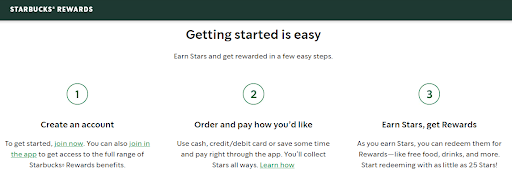
Promote Personalized Experiences
Personalization is the new norm for any business trying to remain competitive. It’s the key to promoting customer satisfaction and loyalty in the long run.
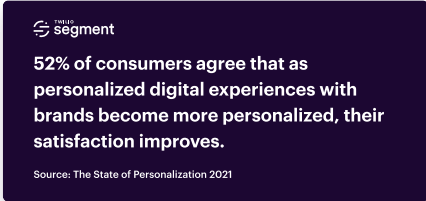
A study by Mckinsey states that 71% of people expect businesses to deliver personalized interactions, and 76% get frustrated if brands fail to do so.
Personalization can occur anytime a customer interacts with your brand.
Here’s how to increase customer satisfaction with personalization strategies:
- Collect first-hand customer data using on-site, in-app, and email surveys.
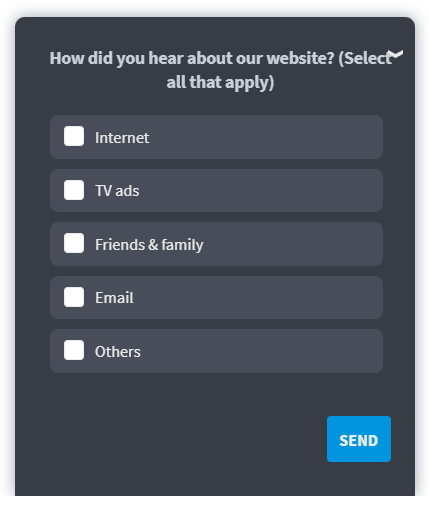
- Offer personalized product recommendations based on their purchase history.
- Tailor your messaging, emails, and notifications to customers’ needs and preferences.
- Follow-up with customers post-purchase or when they interact with your support services.
Pro Tip: You can also create engaging product recommendation quizzes to ask for customers’ preferences and show products that closely relate to those attributes.
Collate Customer Information in One Place to Avoid Mismanagement
Repeating the issue is among the top three factors that can cause an unsatisfactory service experience.
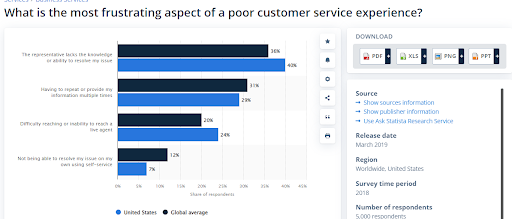
Poor data management leads to a disconnect between different agents. In that case, the following agent is unaware of the conversation between the customer and the previous agent.
But why does the customer have to suffer?
A robust CRM tool like BIGContacts can help centralize data management so every team member can readily access the prospects’ and customers’ information in real time. It’s also necessary to improve customer satisfaction.
Here’s how:
- Log the transcript of every interaction into the customer profile.
- Keep the customers’ data updated in the CRM.
- Create segmented lists based on lifetime value to design personalized marketing campaigns.
- If you use a survey tool like Qualaroo, you can integrate it with the CRM system to streamline data flows.
- Set up automated notifications for upcoming meetings with clients to avoid miscommunication.
Make It Easy for Customers to Contact You
Another aspect that hinders a seamless customer experience is difficulty contacting the support agent. So it’s your job to make it easier for customers to reach you.
Here’s how:
- Add contact info on the homepage and website footer.
- Design a dedicated Contact Us page for your website. Add contact details of different departments to it.
- Install a live chat widget to allow real-time interactions.
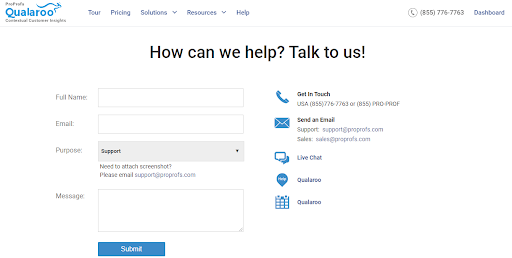
These simple steps promote a seamless/effortless experience which helps improve customer satisfaction.
MeUndies provides one of the best “Contact Us” pages on any website. This single page gives multiple means for customers and visitors to reach the support team and get their queries answered.
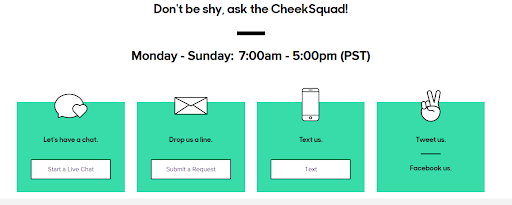
Simple, Sleek & Effective!
Set up a Backend Team to Follow up on Customers’ Calls and Emails
Irrespective of what you do, there will always be people who feel dissatisfied with the experience. Some may leave before you get a chance to make things right.
But this doesn’t mean they are lost. You can still leverage simple customer satisfaction tips to win them back.
One way to target these customers and improve CSAT scores is by creating a backend team to contact them promptly.
Suppose a customer stops using your products/services. Fortunately, you have set up automatic alerts if an account remains inactive for more than 15 days.
Your team gets a notification about this customer. What would be the next step?
Your backend retention team can pick up the case and review the customer’s log activity and interaction history to find the possible reason for churn. Then, contact the customer before it’s too late.
This is just one use case and quite important at that.
How can the backend team help improve customer satisfaction:
- Get in touch with churned customers to solve their issues and convince them to return.
- Proactively update the customers about the progress of their pending tickets and issues.
- Try to calm down angry customers and reassure them that you are working on the issue.
- Try to reactivate inactive customers with offers, discounts, special pricing, etc.
Train Your Staff and Support Team
People expect a knowledgeable agent who is well-versed with the products and can provide a one-stop resolution to their queries.
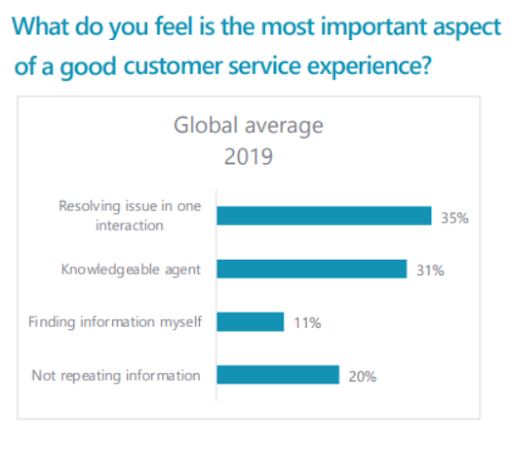
Both of these factors culminate into one thing – a trained and efficient support team.
Even if first-touch resolution may not be possible in every case, training your staff can be a make-or-break move for improving customer satisfaction.
It can help the agent understand the issue on the first try, eliminate the need for the customer to repeat themselves, and help them troubleshoot the problem.
You can also conduct training exercises to explore new creative ways to handle different customers.
Here’s how you can build a trained support staff:
- Use advanced tools like ProProfs Training Maker to design training modules for your staff.
- Create interactive quizzes and courses to train them on different scenarios.
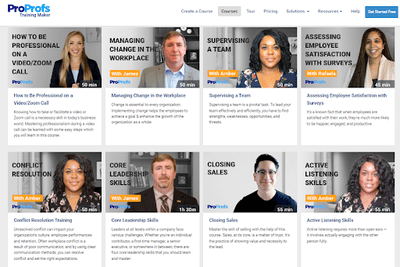
- Use an internal knowledge base to build internal training guides for quick access.
Provide Omnichannel Service and Communication Points
An average person switches 3-5 channels while contacting a business for purchase, support services, or any other interaction. So, restricting them to a specific channel can lead to frustration, page abandonment, and churn.
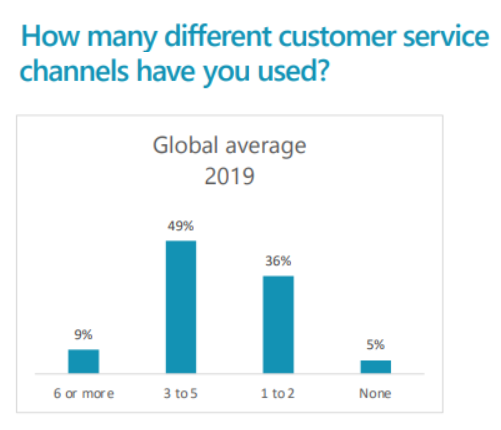
Suppose a customer browses your website from a desktop, adds the product to the cart, and then closes the site.
The same customer now wants to place the order on the go using the mobile app. But if you don’t host an app, they might switch to your competition to buy the product.
In the same way, a customer looking for immediate help regarding a product-breaking issue may prefer live chat or call instead of a helpdesk ticket.
That’s why omnichannel support is essential to provide a positive experience and improve customer satisfaction.
Here’s how to set up omnichannel service points:
- Map customers’ journeys and identify critical touchpoints.
- Pick 2-3 most used sources to optimize them.
- Install service points at these locations.
Then, send surveys to customers over these channels to gauge their satisfaction with your products and services.
Monitor the Team’s Performance and Efficiency to Improve on It
You have stationed the well-trained staff across various channels, but how will you know if they are performing up to the mark?
By crunching efficiency numbers!
- Track the performance metrics such as time on call, average chat time, number of chats handled, repeat calls, etc.
- If you have a helpdesk system, monitor the ticket flow, the number of requests closed by each member, and the tickets marked as urgent.
Once you have a baseline, you can try to improve these numbers and, as a result, improve customer satisfaction with your services.
You can also deploy CSAT surveys on these channels:
- Add pulse surveys on your live chat, tickets, phone IVR, and other channels after the first interaction.
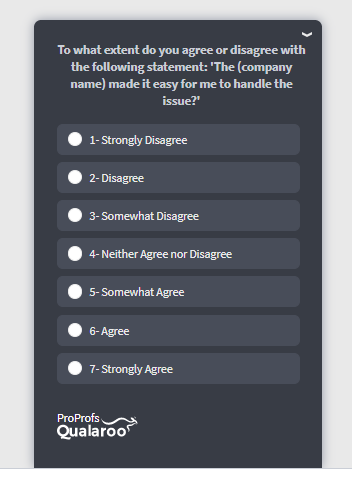
- Once you have closed the ticket, send a follow-up survey to ask how easy it was for the customer to get the queries resolved.
- Use follow-up questions to collect suggestions about improving the processes further.
Release Regular Product Updates
People are always looking for something new and exciting in the market that adds value to their brand experience. That’s why feature engagement is one of the best tips for customer satisfaction.
Take Tiktok as an example. The short video clips app became so popular that YouTube decided to add the format to its platform – YouTube Shorts.
Or look at Apple’s runaway product – Earpods. It was released in 2016 and became Apple’s most popular product within two years. The success enticed other brands to release their versions of Earpods and engage customers.

This is a solid example of achieving customer satisfaction through engagement and expectations.
Who knows, your new product feature could be the next viral thing.
Product updates also help to weed out issues that hamper a seamless experience. Critical issues can pop up anytime, and regular updates can address them promptly.
Take Udemy, for example. The e-learning platform deployed surveys using Qualaroo to collect product feedback from users. It helped the team pinpoint that many students from non-English speaking countries were enrolling in courses taught in English.
It led the platform to add automatic captioning in English-based courses to improve product usage.
Design a Fantastic Onboarding Process
80% of people say that they have deleted an app because they didn’t know how to use it. A successful onboarding makes it easier for new users to get used to the product.
It makes their life easy, curbs frustration, and increases customer stickiness. It also helps improve customer satisfaction by familiarizing them with the product features.
But to design an awesome onboarding experience, you must understand what features you want to introduce without overwhelming the users.
So how will you decide what to include in the onboarding process? By listening to the voice of the customers:
- Use in-product surveys to pinpoint issues related to product navigation, features, and other aspects.
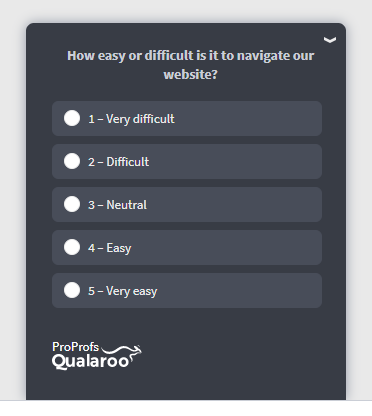
- Then, design the onboarding process that addresses these points.
- Create post-onboarding surveys to collect feedback from new users about their experience and optimize it further.
Slack offers its users one of the most streamlined and outstanding onboarding tours. It educates new users about the product features using message prompts and inline tips. You can end the tour at any point, so users can skip it if they want to.
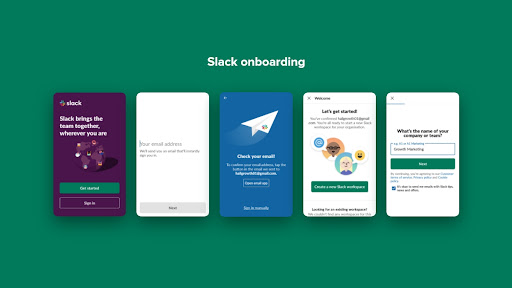
Add in-product Guides and Tooltips
A knowledge base works great. But let’s take it up a notch, i.e., from product level to individual feature level.
Suppose a user wants to learn about a specific setting, label, or new feature. They can sure go to the knowledge base section to find the information. But it would take time.
That’s where inline tooltips and guides can help you. They are one of the best ways to achieve customer satisfaction and a better user experience.
These in-product contextual messages provide additional information about the specific feature, setting, label, or field.
It prevents users from stopping what they are doing and going on a scavenger hunt.
Here’s how you can use tooltips to improve customer satisfaction:
- Add inline guides or tooltips to guide the users about new features.
- Trigger tooltips automatically when new users work with the product for the first time
Pro Tip: Don’t go overboard with tooltips or it could backfire. The right approach is to find where people struggle with your product and add these tooltips to such strategic positions. You can use feedback data from surveys to locate points of friction.
Use Live Chat
Live chat is the second most preferred medium by users.
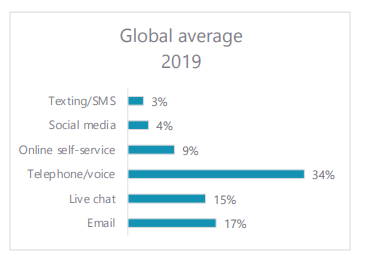
The reasons are:
- Instant access to the support staff
- Real-time resolution to queries without any extra effort.
- You can easily set it up in a few hours on your website and app using a robust tool like ProProfs Chat.
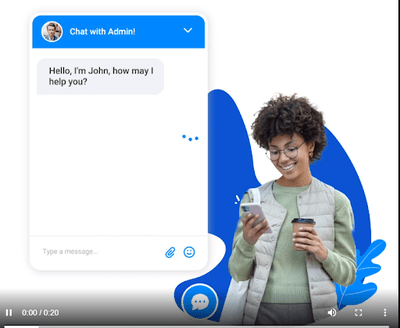
Plus, with the integration of AI-based chatbots and options to build advanced conversational flows, the live chat widget has become ubiquitous on websites, mobile apps, and even SaaS products.
Chatbots can manage chats in real time, redirect the user to a real agent, and even create a support ticket if needed. It helps to optimize the process and improve customer satisfaction.
You can also add surveys to the live chat window to collect feedback and optimize it.
Implement a Help Desk System
The helpdesk system is another customer touchpoint that can help to improve customer satisfaction. It’s easily accessible, provides an easy option to raise complaints, and improves the first-contact resolution rate.
A ticketing tool is particularly suited for complex complaints that can not be resolved over call or chat. For example, if a customer faces an issue with the install code in your product, they can raise a ticket, and you can reply with a step-by-step process to help them.

Here’s how to use the help desk to improve customer satisfaction:
- Embed a ticket form on your “Contact Us” page. The customers can submit it to raise a ticket.
- Send an automated email after the first contact to acknowledge the receipt of the ticket.
- If you cannot deliver the resolution on time, proactively contact the customer to provide the update.
You can combine surveys with your helpdesk system to collect CSAT scores.
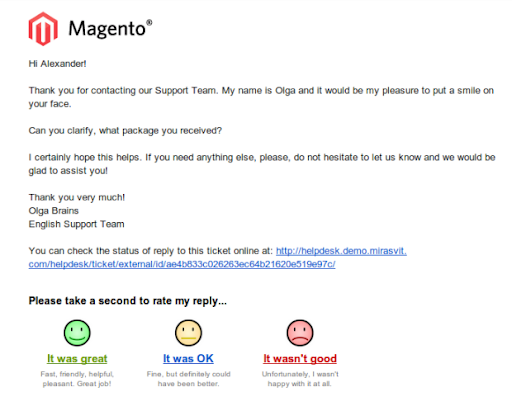
Build an Extensive Knowledge Base & Other Self-Service Points
Over 85% of customers expect companies to provide a knowledge base or FAQ section.
Touchpoints like a knowledge base, FAQ sections, and community forums serve as self-service points for customers to resolve their queries.
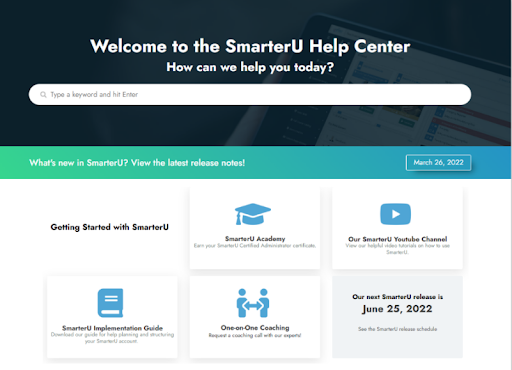
It’s much more convenient than waiting for the call to connect. Customers also prefer self-service options to find the answer to their queries by themselves.
It also results in fewer calls, live chats, and support tickets.
Now that’s a proper customer-centric approach toward achieving and improving customer satisfaction.
- Use a dedicated Knowledge base tool like ProProfs KB to add a help section to your website and product.
- Publish guides, FAQs, and how-to sections to educate users about the product.
- Add pulse surveys to the pages to collect feedback about what’s missing.
Make Refund and Exchange Easy
Whether you like it or not, returns are also a part of the customer experience and a significant factor in enhancing customer satisfaction.
Online shopping tends to produce more return orders because the customers cannot physically see the product while purchasing it. So much so that almost half of the customers send back at least one item purchased online.
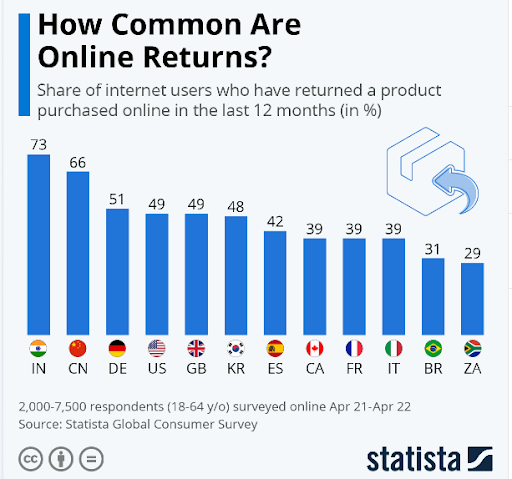
Mishandling return and exchange requests would eventually lead to frustrated customers and complaints.
So, it’s your job to implement an RMA or return merchandise authorization process and streamline the exchanges and returns.
Here’s how to use refund and exchange policies to boost customer satisfaction:
- Waive return shipping charges if the product is damaged or send a shipping label online.
- Issue credit points for the inconvenience.
- Handle refunds and exchanges on a case-to-case basis. Look at the customer’s lifetime value and decide to issue to refund/exchange even if the time limit has passed.
Follow a Customer-Centric Road to Improve Customer Satisfaction
By now, You must have tons of ideas to create a seamless customer experience. But, if you’re still in a dilemma about how to start implementing these customer satisfaction strategies, here’s what you can do.
First, move the basics out of the way, like live chat, knowledge base, helpdesk, and contact information page.
Then you can use a feedback tool like Qualaroo to add surveys to these touchpoints and collect the CSAT scores. Use follow-up questions to identify issues and resolve them to improve customer satisfaction.
Finally, as your experience management loop takes shape, you can move towards more sophisticated techniques like experience personalization tools.
Remember to collect feedback at each point to optimize them further and improve customer satisfaction.
FAQS
How to Measure Customer Satisfaction?
You can use simple metrics to measure and improve customer satisfaction. These metrics can help you gauge customer satisfaction at various customer journey stages:
- Net Promoter Score (NPS)
NPS is probably the most common metric used in the industry to measure customer satisfaction and loyalty. This metric considers the overall experience to measure the long-term perception of your brand in the customer’s mind.
You can use it at different interaction points, like when a customer completes a purchase or contacts customer service.
The metric asks a standard question – “On a scale of 0-10, what is the likelihood that you’d recommend [company or product] to a friend or colleague?”
The customers are segregated into promoters (9-10), passives(7-8), and detractors (0-6). The NPS score is the percentage of promoters minus the percentage of detractors.
- Customer Satisfaction Score (CSAT)
CSAT points toward a particular interaction rather than the overall experience. Suppose a visitor lands on your website, navigates the product page, adds the product to the cart, and completes the checkout process to place the order.
Now you send a CSAT survey to the customer to ask about the purchase experience. Then, the survey would refer to the latest interaction, i.e., the checkout process.
Though not necessary, this CSAT would consider the checkout process and not the product discovery or the content on the product page.
Here is a simple question for collecting the CSAT score:
“How satisfied are you with the purchase experience?”
- Very unsatisfied
- Unsatisfied
- Neutral
- Satisfied
- Very unsatisfied
The score helps to divide the respondents into satisfied and unsatisfied customers.
You can calculate the CSAT score using the following formula:
Divide the number of respondents who score between 4-5 by the total number of responses and multiply the number by 100.
- Customer Effort Score (CES)
CES takes into account the service-based experience like satisfaction with the support services. This metric asks the following question:
“How easy/difficult was it for you to get your query resolved?”
- Very difficult
- Difficult
- Neutral
- Easy
- Very easy
It helps to see if the customer has an effortless experience when contacting the support services or not.
Like CSAT, you can calculate the CES score by dividing the number of respondents who score between (4-5) by the total number of responses and multiplying the number by 100.
- Retention Rate
If customers are satisfied, they are more likely to stick with you. That’s what the retention rate measures.
The retention rate summarizes how many customers decided to stay with you during any given interval.
Here’s the formula to calculate the retention rate:
Customers at the end of the given period – number of customers acquired during the period divided by the number of customers at the start of the period x 100
Retention rate indirectly helps forecast loyalty and customer satisfaction and educates you about the effectiveness of your products and services.
| Related Read: Top Customer Satisfaction Metrics to Monitor |
FREE. All Features. FOREVER!
Try our Forever FREE account with all premium features!


